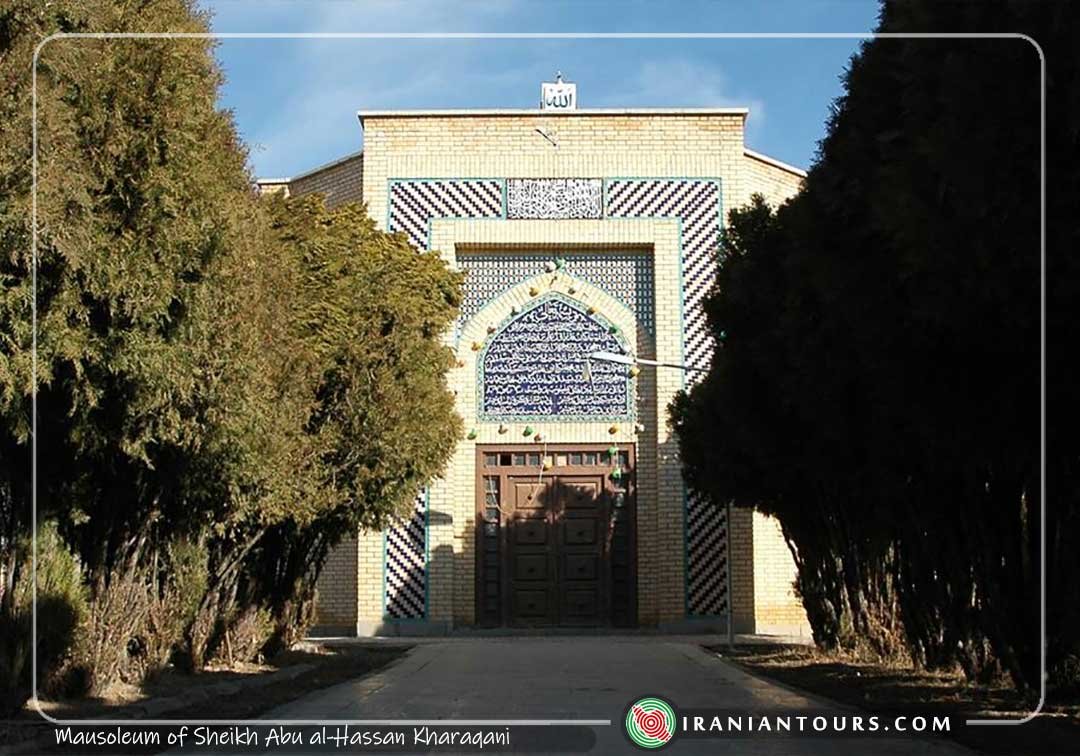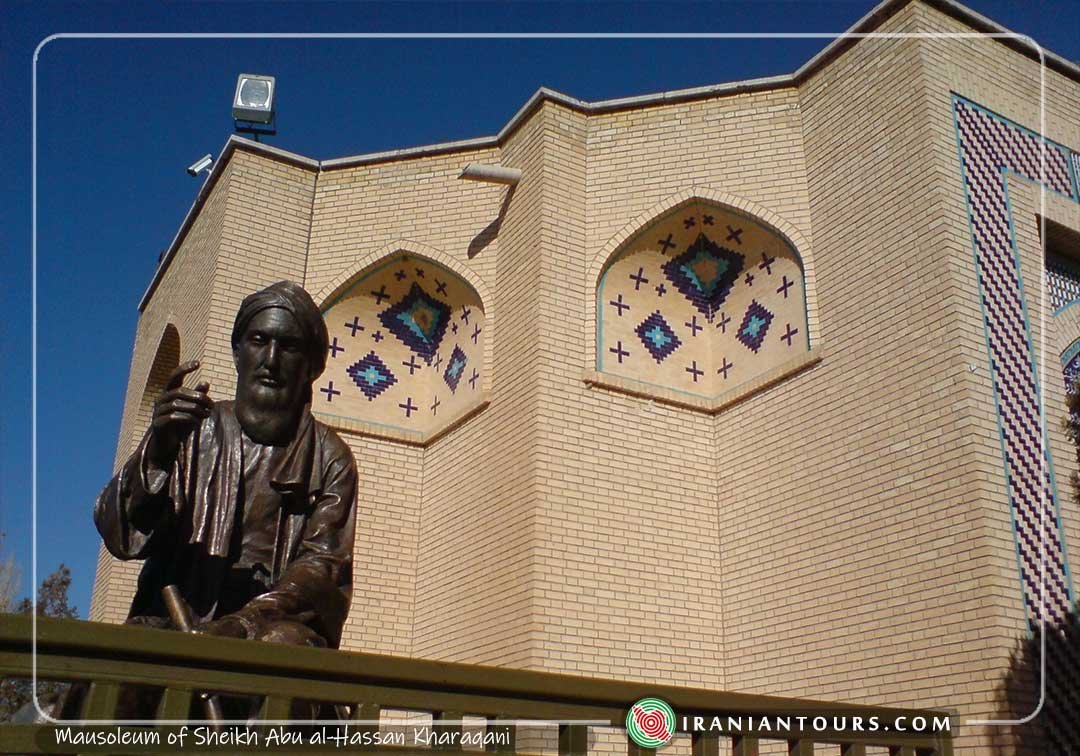Bastam
Bastam is the host of Bayazid Bastami mausoleum, one of the most famous mystics of Iran, which owes its reputation to this place. Bastam is a small city located 5km to Shahroud and one of the districts of Shahroud city in Semnan Province. The distance between Bastam and Semnan, the capital city of the province, is about 190km. There are so many gardens in Bastam and that is why gardening is the most significant job among the Bastam people.
Its geographical location is highly considerable. It is surrounded by mountains and desert. The northern areas of Bastam are the borderline between Semnan and Golestan provinces which reach Alborz Mountains; this northern part has good weather and is of the lushest regions of the province. Abr (meaning cloud) village located at heights is in the north of Bastam and Shahvar mountain is also placed in the west of this city. However, the national park of Touran, a desert region with relatively arid weather is placed in the east of Bastam.
Bastam has so many historic attractions; Bayazid Bastami mausoleum can be considered to be the most important historic building of Bastam. Bayazid is among the most famous mystics in Iran. In addition to Bayazid Khanghah, the brick minaret, Bayazid Bastami mosque, Ilkhanate mosque, Mohammad holy shrine, and Qazan Khan dome (the Museum of East Mysticism) are other Bastam historic complexes. The date of construction of each building is different. The school of Shahrokhieh is also placed in the neighborhood of Bayazid Bastami complex which was built in the time of Shahrokh Teymouri. The building is currently used as the Baqer-ol Olum Seminary.
Kashaneh Tower is another tourist attraction of Bastam with approximately 20meter height. It dates back to 700 A.H. Established in 1389 S.H, The Museum of East Mysticism is also placed in Bastam.
One of the most spectacular historic attractions of Bastam is Bastam Mosque near Kashaneh Tower. The significant features of this place are its delicate stucco and brickworks. Qatri region is one of the natural attractions of Bastam and among the top tourism regions of Abr village. Qatri is placed along the southern margin of Alborz mountains and the borderline of Semnan and Golestan provinces.
Local foods of Shahroud are cooked in Bastam, too; Tah Chin is the most delicious and famous among them. Digi and Yakhni are two other local foods you should
Kashaneh Tower
There is a beautiful 20-meter-high tower in the southeast of Bastam Jama masjid (congregational mosque or Friday mosque) in the north of Shahrud. It is known as Borj-e Kashaneh (Kashaneh Tower) and it is registered in the Iranian heritage list as “tower tomb near Jama masjid.
The tower has a thirty-side regular shape and there are two rows of huge bricks on top of it. There is some inscription on the bricks that on one of them, the name “Uljeitu” is written in Cufic, and on another, the Basmala (bi-smi llāhi r-raḥmāni r-raḥīm) is engraved in Thuluth.
Regarding the inscription at the entrance to the tower, this monument is built in seven hundred AH and it belongs to the seventh or eighth century AH, however, the historical evidence says that the exact year of its establishment is not clear. The residents of Bastam believe that this tower was a fire temple in Zoroastrianism during the pre-Islamic era and after that, it was a tower for observation and according to its structure, it is possible that it was an observatory.
André Godard, a famous orientalist, and Quranologist, believe that this monument is one of the works that Mahmud Ghazan (the seventh ruler of the Mongol Empire) commanded to build it. He said that this tower was called Ghazaneh and step by step, it was called Kashaneh.
To visit this historical monument, you should go to the south of Bastam in Semnan Province. The land that was called Qūmis or Kumis in the past.
The different bricks on top of the tower show that some parts of the roof were destroyed in the past and they were repaired.
It is possible to enter the tower through the mosque and the small hallway beside the mihrab. This hallway has three stucco walls on which Ayat Al-Kursi (often known in English as The Throne Verse is the 255th verse of the 2nd surah of the Quran, Al-Baqarah), and some other Arabic phrases can be found. This hallway joins the mosque to the tower.
There is a very deep well in the middle of this tower and its height is twenty-four meters inside. A very small stairway and its dark hallway are used to get to the top of the tower that evokes the feeling for visitors that they are traveling to a long time ago.
Bayazid Bastami Complex
Bayazid Bastami Complex (Persian: مجموعه بایزید بسطامی, [Bāyazīd Bisṭāmī] ) is located in the city of Bastam in Semnan province, within 6 km of Shahroud city. This complex includes a mosque and several tombs.
Bayazid Bastami who is known as Sultan Al-Arifin in the world of culture and literature is one of the most famous mystics in the ninth century in Iran. Bayazid’s most important works have been collected in several books, among which we can mention Al-Noor.
The tomb of Bayazid Bastami does not have luxurious and dazzling decorations and it is very simple and incomplete which demonstrates the existence of the tomb of a mystic below it (all mystics live in a sample way). It also has an iron window.
Under the dome of the monument, the tomb of Bayazid Bastami can be seen. There is a marble gravestone that is decorated with religious phrases.
It should be mentioned that many tourists and travel authors, including Naser Khosrow, have described the tomb of Bayazid Bastami which is near Shahroud in their travel literature.
In a short distance from Bayazid’s tomb, there is a mausoleum with a conical dome which is attributed to one of the sons of Imam Jafar Sadiq. It is narrated that Imam Sadiq sent him to Bastam with Bayazid Bastami to guide the people of that region.
Among the most important and the oldest monuments of Bayazid Bastami complex, we can mention the mosque and its side minaret (a type of tower built next to mosques). This mosque also has two Shabestan (an underground space). The larger shabestan used for men and the smaller shabestan used for women. The construction of a smaller shabestan is attributed to the Ilkhanate dynasty (1256-1335).
For visiting the tomb of this famous mystic, you should go to Mahdieh Street in Bastam. Semnan province has a changing climate. Some areas are ideal for summer travel and others for winter travel. Therefore, before traveling, you should pay special attention to the destination climate and travel time. Since the climate of the region is mainly hot and dry; Spring is usually the best time to visit Bastam.
Mausoleum of Sheikh Abu al-Hassan Kharaqani
Bastam is a city near Shahroud which can be called the city of mystics. In addition, to be the host of Bayazid Bastami, it has embraced the tomb of Abu al-Hassan Kharaqani, too. It is one of the main spiritual tourism destinations in Iran.
Sheikh Abu al-Hassan Kharaqani is one of the great mystics and Sufis of Iran who lived in the 4th and 5th centuries AH. Khawhjeh Abdullah Ansari was of the disciples and pupils of this great man who mentioned to Sheikh Abu al-Hassan Kharaqani in his writings, besides the other famous scholars like Abolqasem al-Qushayri, Javad Noorbakhsh, and Abo al-Abbas Qassab Amoli who named Abu al-Hassan in their notes. Sheikh Abu al-Hassan Kharaqani considered Bayazid Bastami to be his master.
A famous narrative about him is an epigraph on his Khanqah: “everyone who comes here should be welcomed and not be asked for their faith, since one who deserves a spirit for god, deserves a bread for Abu al-Hassan”
Sheikh Abu al-Hassan Kharaqani is among those Sufis who had a significant role in maintaining the Iranian culture, however, unfortunately, he is not properly known among the public. Based upon some narratives, Mahmud of Ghazni, the Sultan, met him and received some advice from him
The former building of the mausoleum of Sheikh Abu al-Hassan Kharaqani was a plain construction until 1352 AH when a new structure was built over his tomb. Today, this mausoleum is placed in the middle of a green garden. There was a mosque near the tomb in the past from which only the alter (Mihrab) has been remained.
The mausoleum has been designed based on the overall pattern of Persian Garden through which a stream is flowing; A brick building that its façade has been designed to have appeared between two rows of tall trees. There are also several statues of Abu al-Hassan in the yard of the complex.
The mausoleum of Abu al-Hassan Kharaqani is located in Kharaqan village in the north of Bastam, one of Shahroud’s environs. Ecotourism hostels have also been provided in the complex for the tourists.
The historical-cultural complex of Abu al-Hassan Kharaqani was inscribed on the list of National heritages of Iran.







